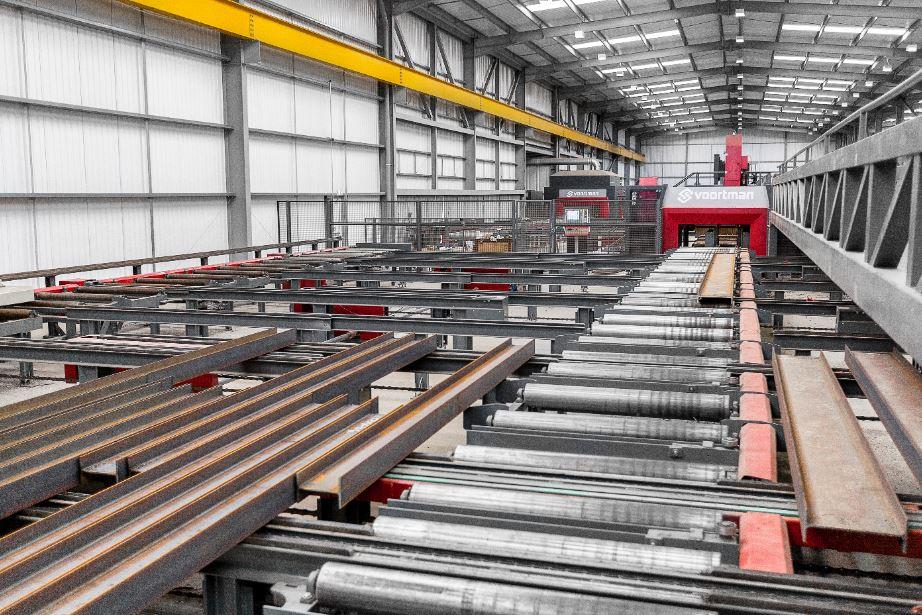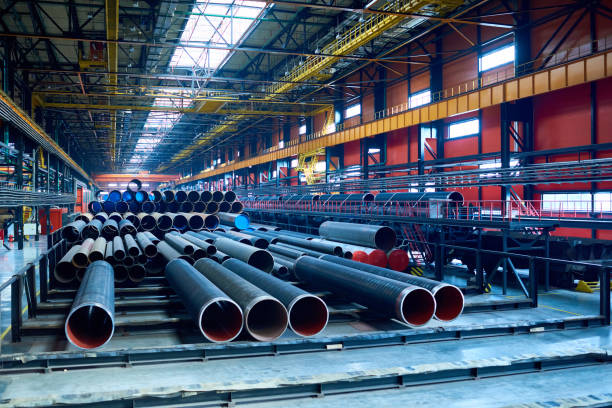Innovative Fads in Steel Manufacture: Enhancing Durability and Accuracy
In the realm of steel construction, the search of resilience and precision has led to a wave of ingenious trends that are reshaping the industry. These trends are not just shaping the present however likewise laying the foundation for the future of steel manufacture, assuring further enhancements in resilience and precision.
Advanced Welding Technologies
In the realm of steel construction, the fostering of sophisticated welding modern technologies has actually significantly revolutionized the industry's technique to attaining exceptional quality and accuracy in architectural welds. Advanced welding modern technologies, such as laser light beam welding and rubbing mix welding, have actually become game-changers in the field. Laser beam of light welding employs a focused laser beam to sign up with metal components with amazing accuracy and rate, making it ideal for thin materials and detailed layouts. On the various other hand, friction stir welding develops unbelievably solid bonds by mechanically intermixing the molecules of the products at the joint, removing the requirement for melting the steel. These modern technologies use various benefits, consisting of minimized heat-affected zones, marginal distortion, and improved mechanical buildings in the bonded joints. By leveraging these sophisticated welding techniques, steel makers can raise the resilience, toughness, and accuracy of their structural welds, fulfilling the progressively requiring demands of modern building and construction jobs.
Robot Automation in Construction
Welcoming robotic automation has come to be a cornerstone of contemporary steel manufacture practices, enhancing and enhancing procedures performance across the market. Robots are changing the means steel components are produced, using unparalleled precision and speed while minimizing human mistake. These automated systems can take care of repetitive tasks with consistent accuracy, resulting in better final result.
One trick benefit of robot automation in steel manufacture is the ability to work around the clock without tiredness, dramatically raising manufacturing result. This continual procedure minimizes downtime and accelerates project timelines, ultimately conserving prices for suppliers. In addition, robotics can be set to execute detailed jobs that may be dangerous or challenging for human workers, improving safety and security in the office.
Moreover, robot automation makes it possible for seamless combination with various other digital innovations, such as computer-aided layout (CAD) software application and Web of Points (IoT) systems (steel fabrication melbourne). This interconnected strategy enhances communication in between various stages of construction, maximizing operations and guaranteeing real-time tracking and control. As the steel manufacture sector continues to progress, robotic automation sticks out as a transformative pressure driving performance and precision in making processes

High-Strength Alloy Growth
The innovation of high-strength alloy development in steel fabrication is reshaping the industry's method to enhancing material sturdiness and efficiency. High-strength alloys are engineered to display remarkable mechanical residential properties, such as raised tensile toughness, sturdiness, and deterioration resistance contrasted to standard steel qualities. By integrating these sophisticated alloys into fabrication processes, manufacturers can generate parts that stand up to greater tension levels and harsh settings, bring about even more long lasting and reputable output.
One trick advantage of high-strength alloy development is the ability to lower material thickness without endangering architectural integrity. This not just leads to lighter-weight components yet additionally adds to set you back financial savings and improved performance in construction and assembly procedures. Furthermore, the enhanced strength-to-weight proportion of these alloys enables the design and building and construction of frameworks with greater load-bearing capabilities while minimizing total weight.
3D Modeling and Simulation Software Program
Advancements in steel fabrication processes have been substantially thrust by the assimilation of cutting-edge 3D modeling and simulation software tools. These tools allow Read More Here fabricators to create look at here comprehensive virtual models of their projects, enabling them to imagine the final product with precision before any kind of physical job starts.

Lasting Practices in Steel Production
Including sustainable techniques into steel manufacturing processes is crucial for lessening environmental effect and ensuring long-lasting source accessibility. One vital sustainable technique is the adoption of energy-efficient modern technologies to reduce greenhouse gas discharges during the steel manufacturing procedure. This includes utilizing eco-friendly energy resources, such as solar or wind power, to power steel plants and implementing energy-efficient devices to maximize power usage.
One more crucial element of lasting steel manufacturing is the responsible sourcing of resources. This entails ensuring that the iron ore and other sources made use of in steelmaking are obtained from honest and eco pleasant resources. By advertising transparency in the supply chain and adhering to stringent ecological standards, steel producers can lessen the adverse impacts of resource extraction on regional environments and areas.

Final Thought
In verdict, the innovative fads in steel construction such as innovative welding modern technologies, robotic automation, high-strength alloy growth, 3D modeling and simulation software program, and sustainable techniques are boosting the toughness and accuracy of steel products. These advancements are reinventing the steel manufacture market by improving efficiency, sustainability, and top quality. It is clear that the future of steel fabrication depends on accepting these sophisticated technologies to fulfill the demands of contemporary building and construction and manufacturing markets.
In the world of steel manufacture, the quest of longevity and precision has led to a wave of innovative trends that are reshaping the sector.In the world of steel construction, the adoption of advanced welding technologies has actually dramatically changed the market's strategy to achieving premium quality and precision in structural welds. As the steel construction sector continues to advance, robotic automation stands out as a transformative force driving effectiveness and precision in making processes.
Furthermore, recycling dig this and reusing steel scrap and waste products play a significant duty in boosting the sustainability of steel manufacturing. steel fixing.In final thought, the ingenious trends in steel fabrication such as sophisticated welding technologies, robot automation, high-strength alloy growth, 3D modeling and simulation software program, and lasting techniques are enhancing the sturdiness and precision of steel items